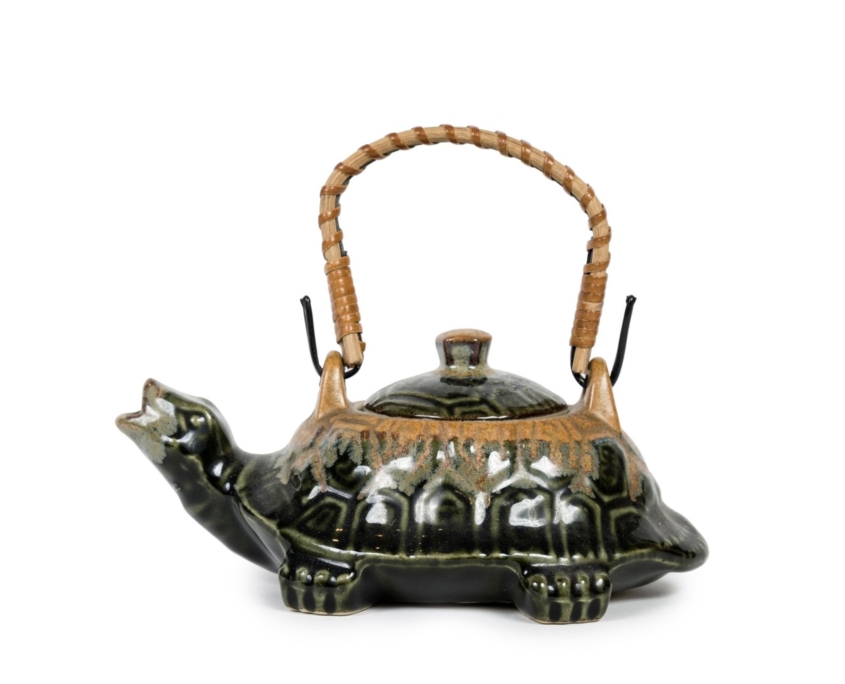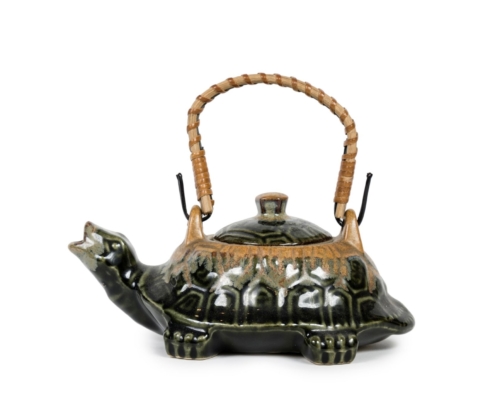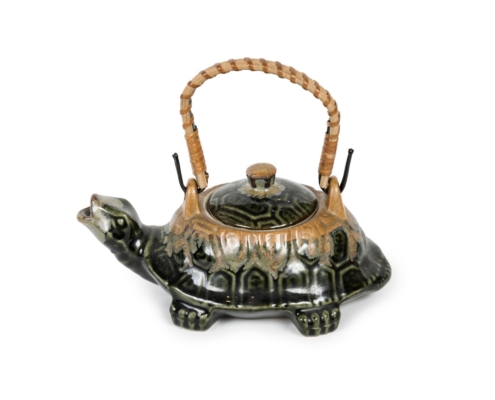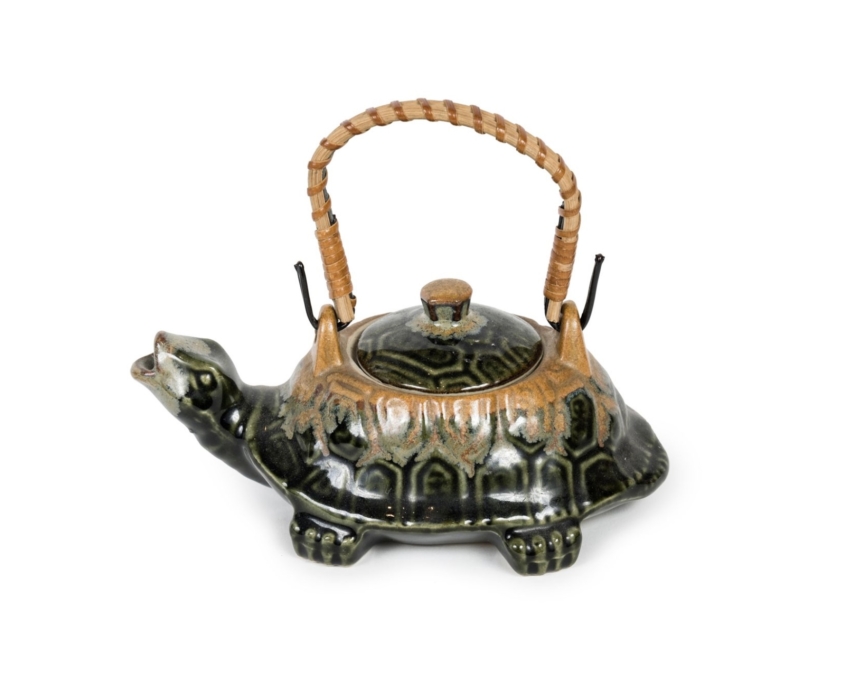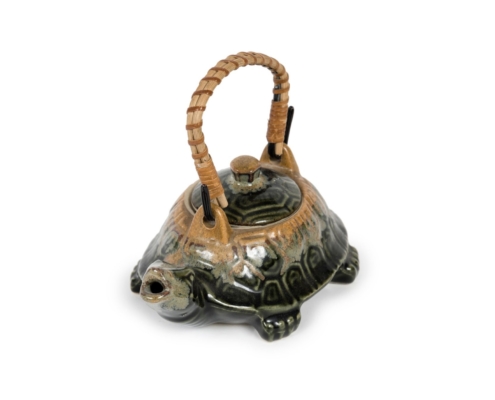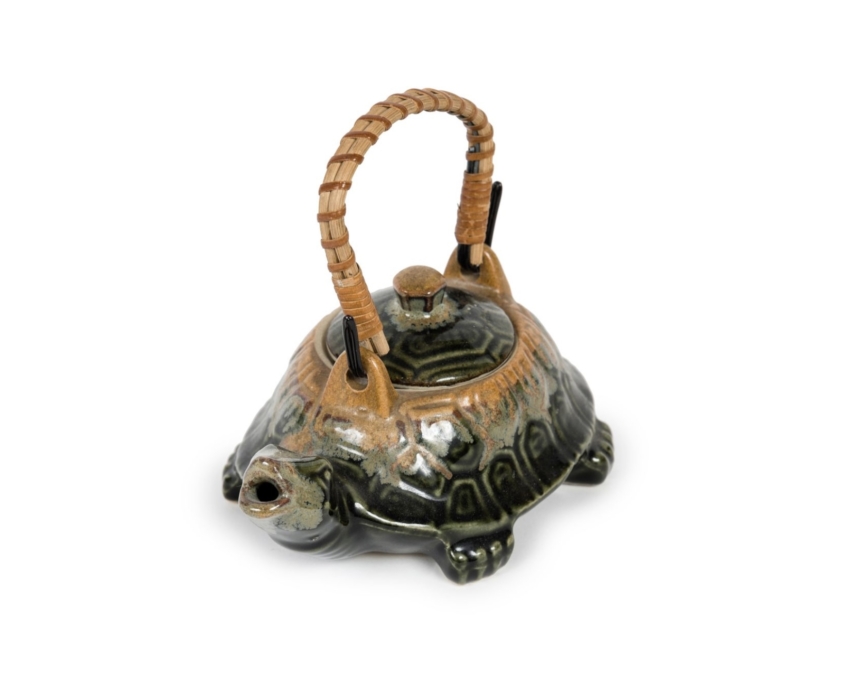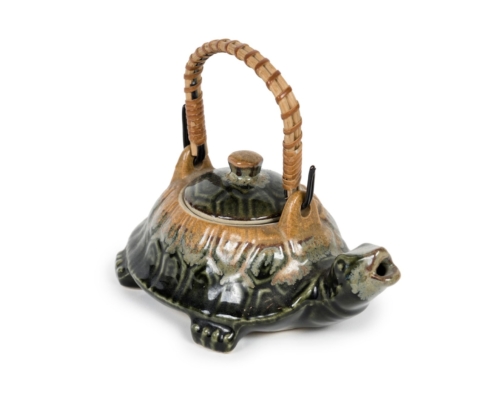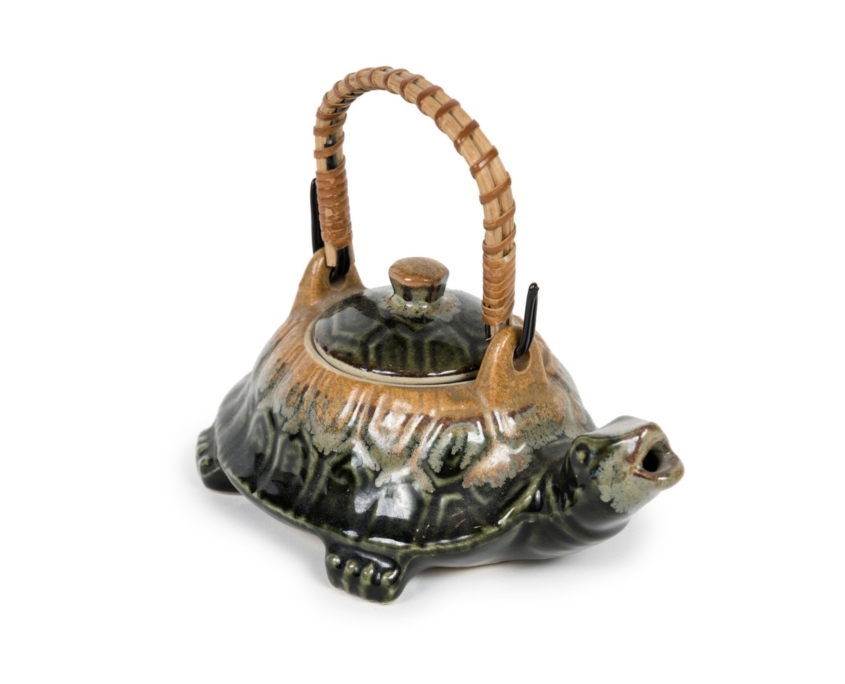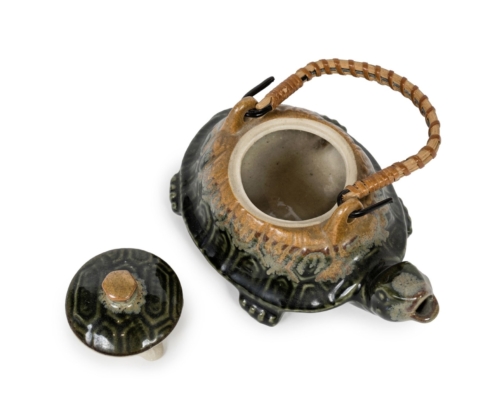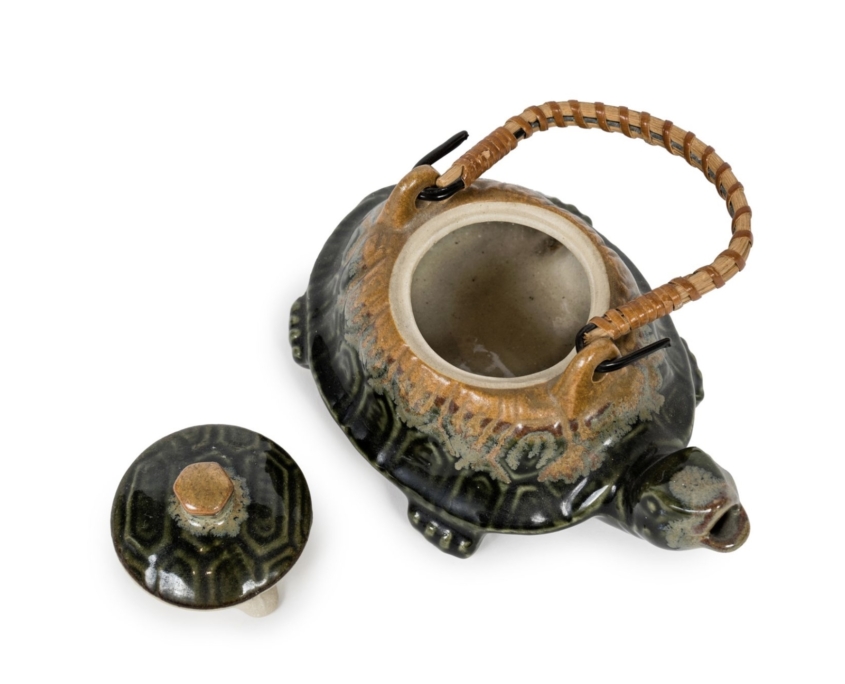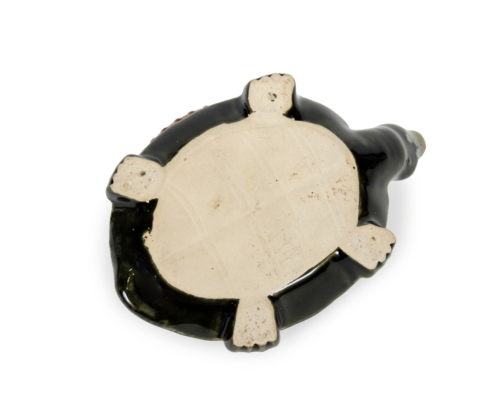SANDSTONE TURTLE TEAPOT – TAISHO
Reference: 2024-1288
Teapot made of stoneware with slip decoration, shaped like a turtle. Glazed interior, unglazed rim around the lid and lower part.
In Japan, the turtle (known as “kame” in Japanese) is a symbol rich in meaning and holds a special place in Japanese culture, Taoism, and folklore. It is perceived as a wise and protective creature, recognized for its exceptional longevity. According to popular belief, a turtle can offer its owner 10,000 years of happiness and prosperity due to its long life and slow movements, symbolizing patience and stability.
In Taoism, the turtle is seen as a representation of the world: its shell symbolizes the sky, and its body represents the earth. It embodies the balance between heaven and earth and the concept of universal harmony.
The turtle also plays an important role in Japanese folklore, with legends that have passed through the ages. One of the most famous is told in the Nihon-shoki (Chronicles of Japan), an ancient text that recounts the origins of Japan. This legend tells the story of a man, Hiroshima Tarô, who saves a baby turtle. In gratitude, the mother turtle invites him to visit her underwater kingdom, a realm where he will discover treasures and secrets related to the sea.
In other traditions, the turtle also takes the form of a yokai, a supernatural creature or spirit, such as the Kappa, an aquatic creature that is part human, part turtle. However, it can also be seen as a benevolent figure, like the Gen-bu, a mythological protective creature who guards the gates of temples and palaces.
The turtle is often depicted in palaces and temples as a symbol of protection. It is also used as a lucky charm in the form of jewelry.
Japan – Taishô era (1912-1926)
Height : 7 cm (13,5 cm with handle) – width : 10 cm – depth : 16 cm




